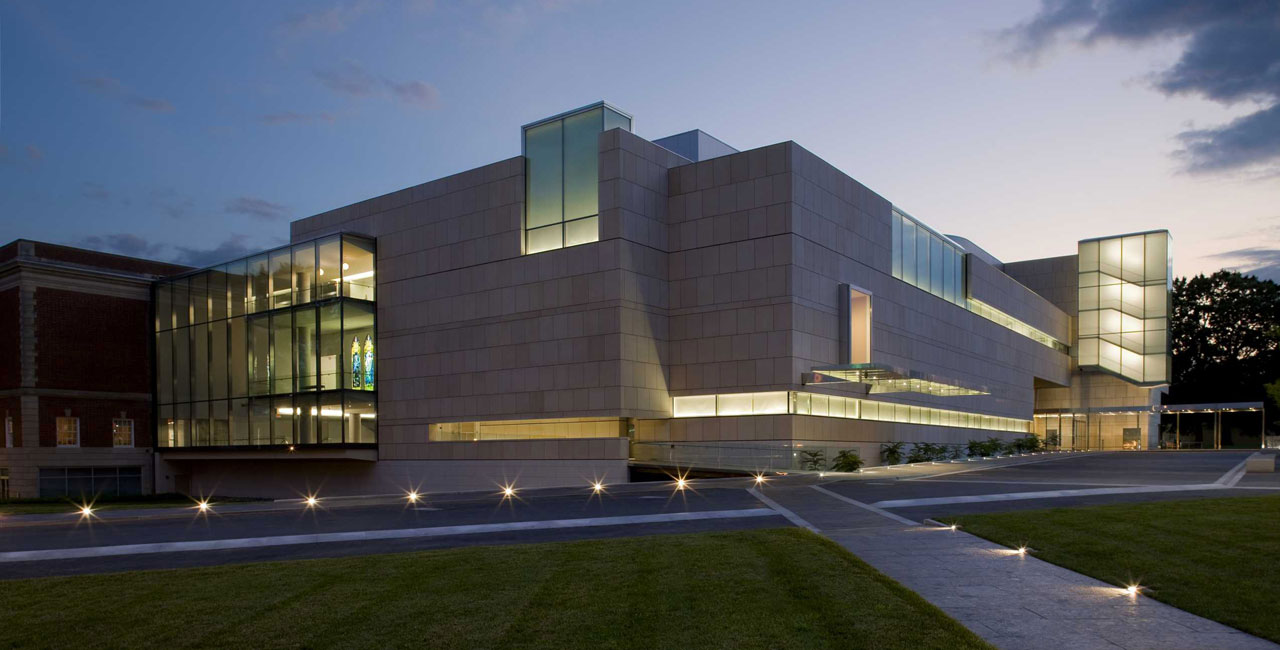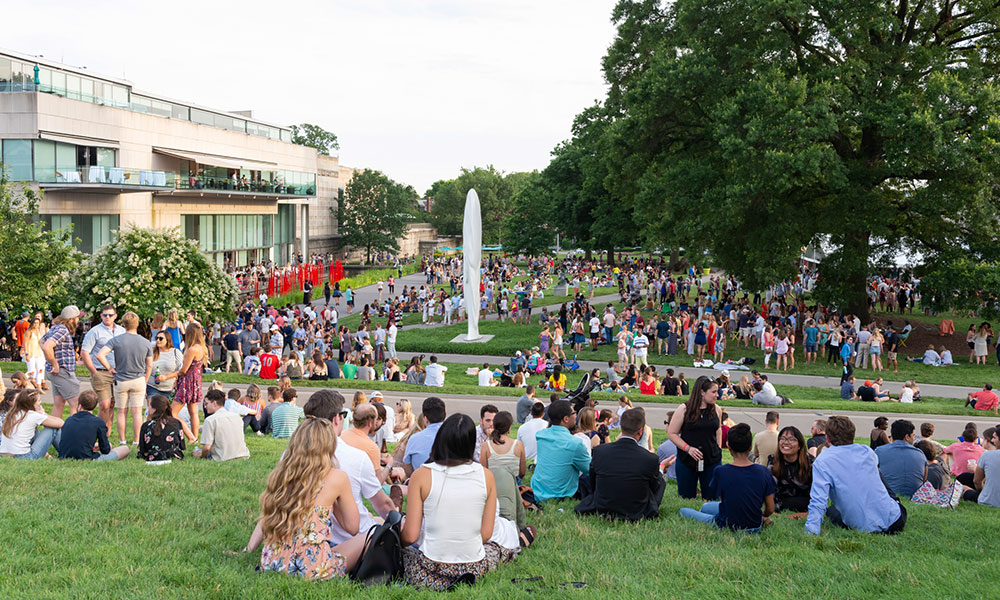
This May marks ten years since the Virginia Museum of Fine Arts completed a historic expansion and grand reopening. Although we looked forward to celebrating this milestone in-person with all of you, understandably those plans and so many others have changed. First and foremost, our thoughts turn to you and to the safety and well-being of our community. With gratitude, we reflect back on the past ten years and look forward to safely resuming operations and opening our doors once again—365 days a year.
The success of the past decade would not have been possible without your support. We celebrate the expansion and the subsequent ten-year journey knowing that your participation is what brought meaning and purpose to every endeavor. The collections, exhibitions, programs, and events are all part of a profound dialogue. They speak to our humanity, tell our stories, foster empathy, and bring us together—even when we’re apart. We hope you’ll enjoy reflecting back on the past ten years with us. Beginning with this first installment, we’ll consider the many ways VMFA has evolved since the 2010 expansion.
The Physical Transformation
A decade ago, on a picture-perfect first day of May, the Virginia Museum of Fine Arts, with its newly added massive limestone-and-glass structure, stood majestic and complete against the backdrop of a bright blue sky. The museum was poised and ready to welcome the gathering crowd of excited visitors, eager to step inside for the first time. To kickoff the weekend-long event, colorful balloons danced about as the Huguenot High School Marching Band played—all to celebrate the grand reopening of the then seventy-four-year-old museum rebranded as VMFA. The museum had undergone the largest expansion project in its history, and the physical transformation was about to be revealed to the general public at long last. The four-year project was no small feat and required a temporary closure to complete the new wing, new and redesigned galleries, art reinstallations, VMFA Shop, Amuse Restaurant, Best Café, Art Education Center, Sculpture Garden, and more.
When the late London-based American architect Rick Mather (1937–2013), in partnership with Richmond architectural firm SMBW, designed the James W. and Frances G. McGlothlin Wing and the E. Claiborne and Lora Robins Sculpture Garden, their masterful work was part of a concerted effort to reinvent and reimagine the museum. With the Louise B. and J. Harwood Cochrane Atrium as its focal point, the new wing’s expansive structure of towering ceilings and monumental windows created an open, bright, and welcoming space that seamlessly joined together the museum’s past, present, and future. The interior stretched significantly, doubling the area for world-class special exhibitions and increasing total space for VMFA’s permanent collections and exhibitions to 134,000 square feet. With fifty percent more gallery space for displaying the permanent collection, many more works of art were brought out of storage. Today, whether strolling down Arthur Ashe Boulevard (auspiciously renamed as such in 2019) or relaxing in the Sculpture Garden, onlookers encounter a design that visually and symbolically rejects barriers and gives even casual passers-by access to what’s inside.

The architects’ vision for the outdoor spaces included a sprawling, parklike oasis with free WiFi, sitting areas, and dramatic water features—all surrounded by the beauty of art and nature. Between the building’s west side and the museum’s Pauley Center, three and a half acres, which once included a paved parking lot, stretch from Grove Avenue, on the south end, to a beautifully landscaped hillside, on the north end, complete with limestone stairs and a cascading waterfall. The garden’s magnificent belvedere, which offers stunning views of the grounds, covers a 600-car parking deck. Various vantage points from within the museum provide views of these outdoor spaces, as extensions of the art housed within. Works of art encountered throughout the grounds include the iconic Red Reeds by Dale Chihuly and Jaume Plensa’s towering and mesmerizing Chloe. In 2019, the museum unveiled Rumors of War, located on the east side of campus, along Arthur Ashe Boulevard. The monumental sculpture by Kehinde Wiley is an outward-facing declaration of inclusion, and its unveiling was the crowning moment for the symbolic nature of VMFA’s physical transformation a decade ago.
Looking back to that day on May 1, 2010, the celebratory ribbon cutting marked a “completion,” but the grand reopening was really just the start of the next and perhaps the most significant chapter in the museum’s long history. From that day forward, VMFA continued to develop in ways that further realize the dreams of what the museum could and should become. Today VMFA is a cultural destination and dynamic urban center where inspiration, contemplation, community, and wonder are possible for all. The museum’s reputation has advanced in the art world, and its work has garnered national and international attention thanks to a growing, comprehensive collection of nearly 50,000 works of art spanning 6,000 years of world history and acclaimed special exhibitions showcasing Pablo Picasso, Kehinde Wiley, Sally Mann, Dale Chihuly, Auguste Rodin, China’s Terracotta Army, Howardena Pindell, Edward Hopper, and many others. At the end of last year, when the New York Times included Richmond on its world-wide list of 52 Places to Go in 2020, it proclaimed “a once quiet Southern city now shines as a true cultural destination,” noting VMFA as a primary reason for that distinction.
Stay connected and discover art
that consoles, inspires, and excites you.
Subscribe to receive VMFA emails that provide the latest news
on upcoming exhibitions, programs, and events.
Also, follow us on social media.


